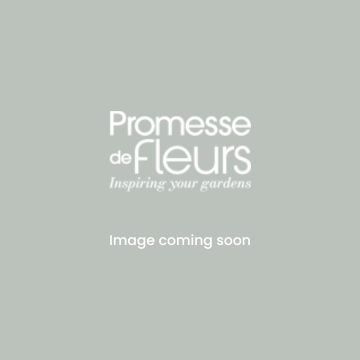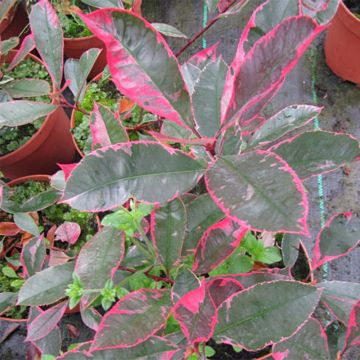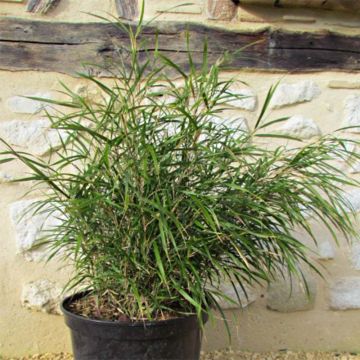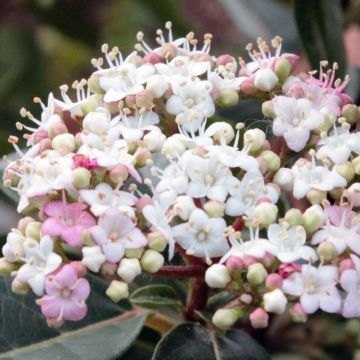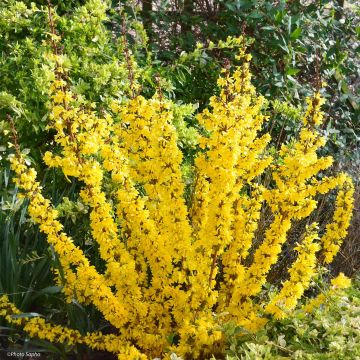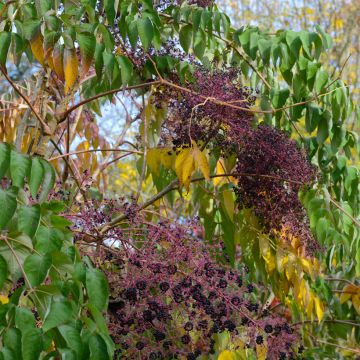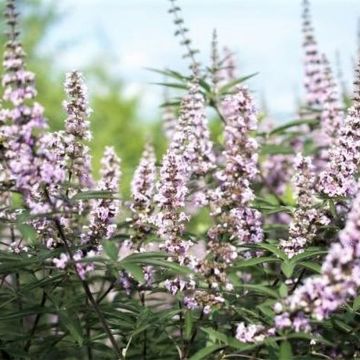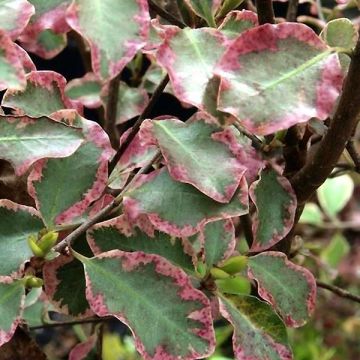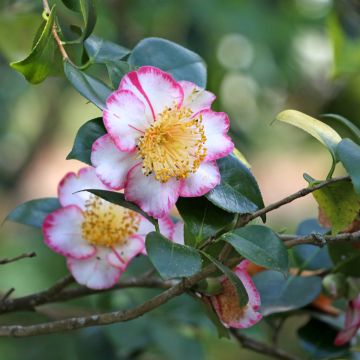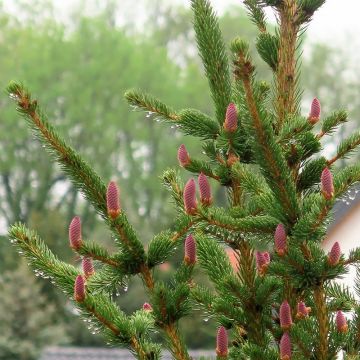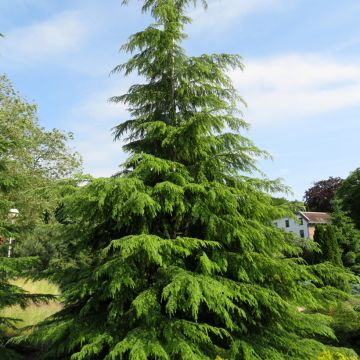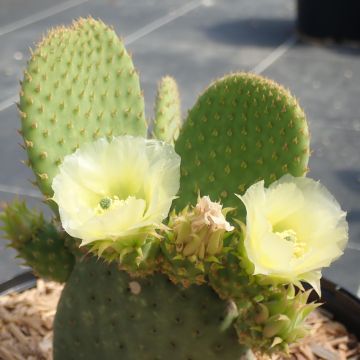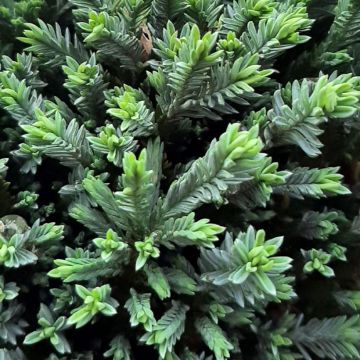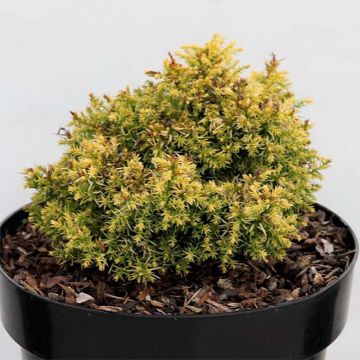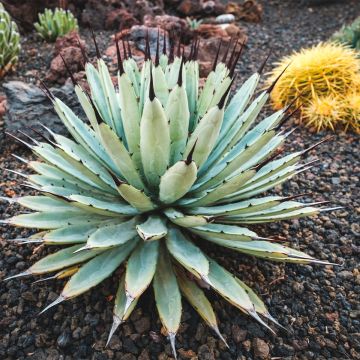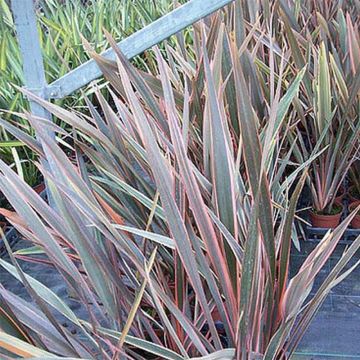Shipping country and language
Your country of residence may be:
Your country of residence is:
For a better user experience on our website, you can select:
Your shipping country:
-
Andorra
-
Austria
-
Belgium
-
Bulgaria
-
Canada
-
Chile
-
Croatia
-
Cyprus
-
Czechia
-
Denmark
-
Estonia
-
Finland
-
France
-
Germany
-
Greece
-
Hungary
-
Iceland
-
Ireland
-
Italy
-
Latvia
-
Lithuania
-
Luxembourg
-
Malta
-
Monaco
-
Netherlands
-
Poland
-
Portugal
-
Romania
-
Slovakia
-
Slovenia
-
Spain
-
Sweden
-
Switzerland
-
United Kingdom
We only deliver seed and bulb products to your country. If you add other products to your basket, they cannot be shipped.
Language:
-
French
-
German
-
Spanish
-
English
-
Italian
My Account
Hello
My wish lists
Log in / Register
Existing customer?
New customer?
Create an account to track your orders, access our customer service and, if you wish, make the most of our upcoming offers.
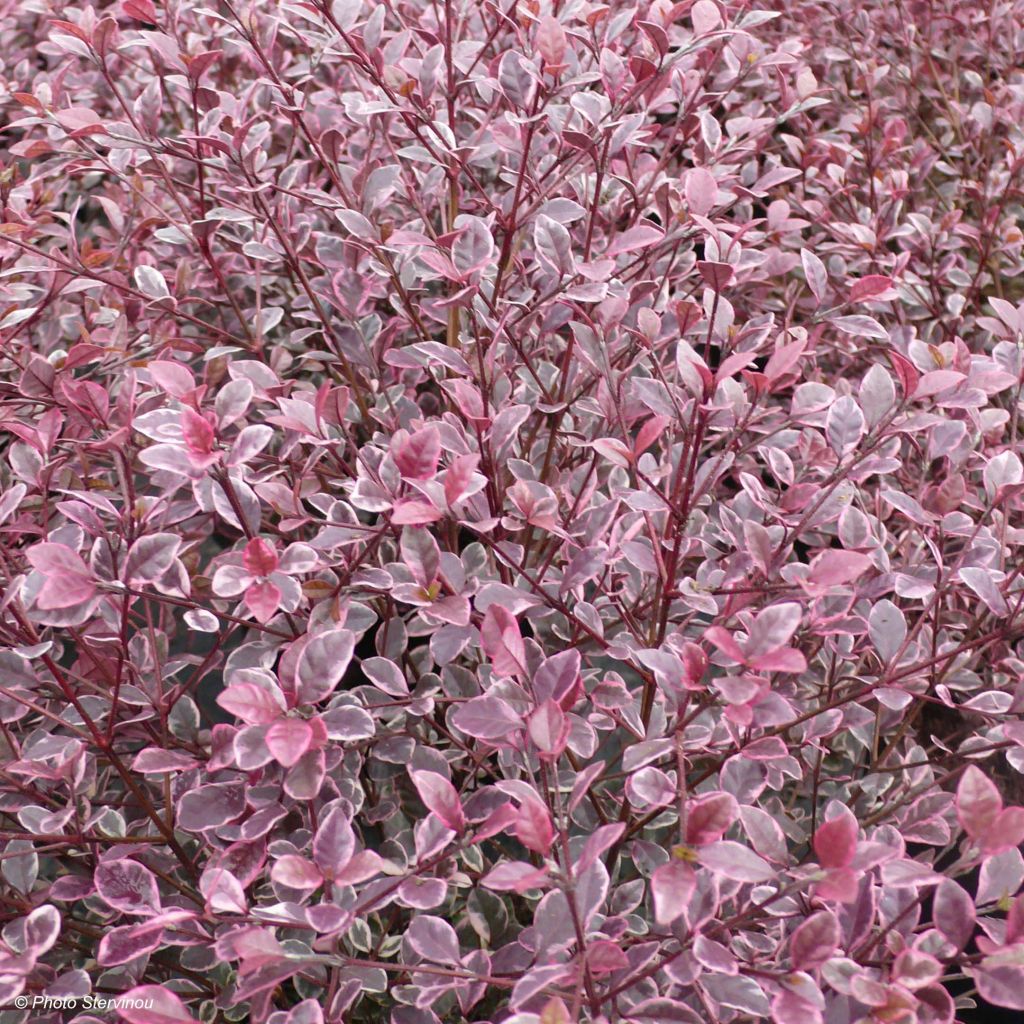

Lophomyrtus Magic dragon
Lophomyrtus ralphii Magic dragon
Lophomyrtus x ralphii Magic dragon®
New Zealand Myrtle
This young plant, in my opinion, seems to have died shortly after being planted. All the leaves have fallen off and there has been no growth since.
Lau B., 22/10/2022
Order in the next for dispatch today!
Dispatch by letter from 3,90 €.
Delivery charge from 5,90 € Oversize package delivery charge from 6,90 €.
More information
This item is not available in your country.
Shipping country:
-
Andorra
-
Austria
-
Belgium
-
Bulgaria
-
Canada
-
Chile
-
Croatia
-
Cyprus
-
Czechia
-
Denmark
-
Estonia
-
Finland
-
France
-
Germany
-
Greece
-
Hungary
-
Iceland
-
Ireland
-
Italy
-
Latvia
-
Lithuania
-
Luxembourg
-
Malta
-
Monaco
-
Netherlands
-
Poland
-
Portugal
-
Romania
-
Slovakia
-
Slovenia
-
Spain
-
Sweden
-
Switzerland
-
United Kingdom
Schedule delivery date,
and select date in basket
This plant carries a 24 months recovery warranty
More information
We guarantee the quality of our plants for a full growing cycle, and will replace at our expense any plant that fails to recover under normal climatic and planting conditions.
From 5,90 € for pickup delivery and 6,90 € for home delivery
Express home delivery from 8,90 €.
Would this plant suit my garden?
Set up your Plantfit profile →
Description
Lophomyrtus ralphii 'Magic Dragon' is one of these delightful New Zealand shrubs that are not very hardy but absolutely charming all year round. When placed on a well-protected patio, it creates, along with other plants from the antipodes, a subtly exotic atmosphere. Its summer flowers, delicate yet abundant, produce numerous small powdery flowers in a cream-white colour, which seem to twinkle against the backdrop of wonderfully coloured purple, cream, and pink foliage . In winter, it is covered with fruits resembling small red pearls. This relative of the myrtles, dense and evergreen and of a modest size, is a vibrant yet distinguished plant that thrives in the ground in very mild climates and in humus-rich sandy soil, which can be slightly calcareous and cool in summer. Elsewhere, it can be cultivated like a citrus plant, in a large pot, to be stored frost-free in winter.
Lophomyrtus 'Magic Dragon' is a small shrub from the Myrtaceae family. It belongs to a series of hybrids and are a result of cross-breeding between the only two species in the genus, Lophomyrtus bullata and Lophomyrtus obcordata, both native to New Zealand. 'Magic Dragon' is a recent cultivar, very colourful, and derived from the variety 'Red Dragon', with very dark foliage. The shrub will reach an average height of 1.5 meters (4 feet 11 inches) and a width of 1.2 meters (3 feet 11 inches). Its growth is moderately fast and its habit is naturally dense, branching, slightly upright, and very bushy. The small, evergreen, shiny, ovate, leathery leaves have a blistered appearance and emit a slight aroma when crushed. They emerge in a purple colour, then darken and variegate with cream and pink, with all these colours blending together. The very nectar-rich shrub blooms generously in June-July. The small globular flowers, white to ivory, slightly fragrant, have 4 petals surrounding a prominent cluster of stamens and are 1 cm (0.4 in) wide. They appear in the axils of the leaves, on the shoots of the same year's growth, and are followed in autumn by the formation of small round, fleshy fruits that turn a beautiful red-pink colour at ripeness.
Hardy up to about -6°C (21.2 °F), Lophomyrtus 'Magic Dragon' is a charming terrace and orangery plant in cold climates. In a greenhouse or conservatory, it will create an extremely decorative group with an orange tree, a Leucadendron, and a Mimosa, evoking landscapes with exotic charm and fragrance. In mild climates, it can be used as a standalone plant, a low hedge - it tolerates pruning well - or in a flower bed, alongside Leptospermum, boronia, or even Eriostemon. It can also be planted in an evergreen hedge, accompanied by a sarcococca, a spring-flowering broom, dwarf rhododendrons in non-calcareous soil, or red-flowering callistemons (Callistemon citrinus 'Splendens').
Report an error about the product description
Lophomyrtus ralphii Magic dragon in pictures
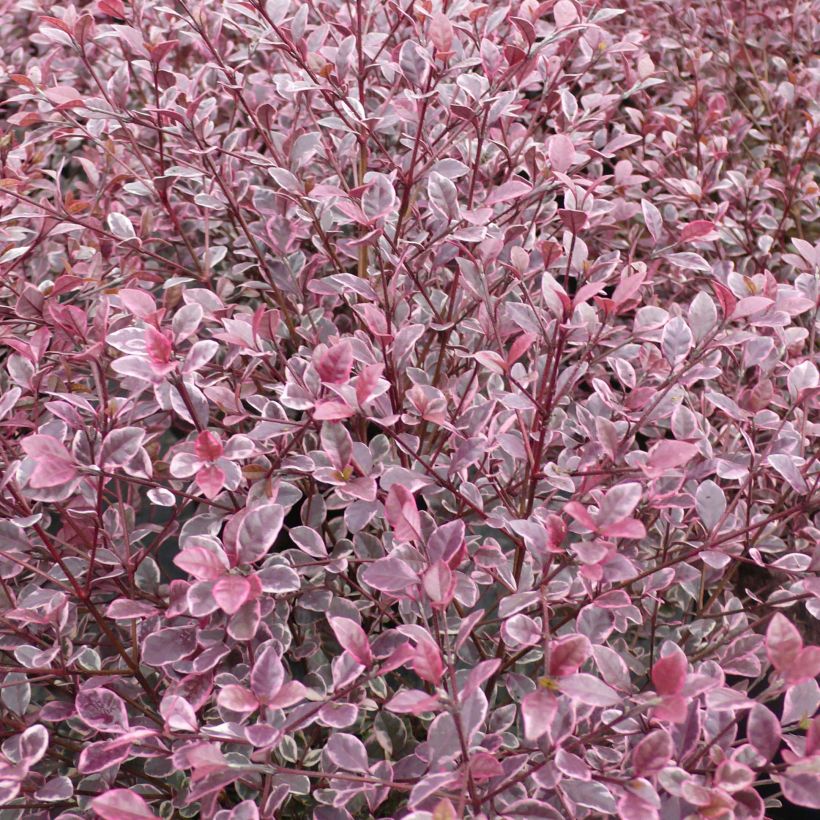

Plant habit
Flowering
Foliage
Botanical data
Lophomyrtus
x ralphii
Magic dragon®
Myrtaceae
New Zealand Myrtle
Cultivar or hybrid
Other Shrubs A to Z
Planting and care
Lophomyrtus ralphii 'Magic Dragon' will thrive in a light, humus-rich, non-calcareous soil that is well-drained but moist, especially during the summer. While it can tolerate temporary drought once established, its flowering and fruiting, which are abundant under favourable conditions, will be greatly affected by a lack of water. A loose soil, whether humus-rich, slightly rocky, or sandy and slightly acidic to neutral, is essential for successful cultivation. It can withstand sea spray. Plant it after the last frost or in September-October in very mild climates. It will thrive in non-scorching sunlight to enhance the intensity of the colours of its foliage, or alternatively in partial shade. Under these conditions, it is hardy down to -5 or -6°C (23 or 21.2 °F) and can live for many years. Wrap it in a winter cover in colder regions during winter, and protect it from the cold as much as possible. Place it in the warmest corner of the garden, in full sun against a south-facing wall. However, in colder areas further away from the sea, it will be necessary to cultivate it in a large pot and store it indoors during winter in a bright but unheated space. To shape it, you can prune the stems after flowering to encourage branching.
Container cultivation:
Ensure good drainage at the bottom of a large pot. Use a lightweight substrate enriched with humus-rich compos, sand, and ericaceous soil. A soil mix for Mediterranean or citrus plants will also be suitable. Apply a slow-release fertilizer in late winter and autumn. Water generously during summer, preferably with non-calcareous water, allowing the soil to dry slightly between waterings. The more you water, the more your Lophomyrtus will flower and fruit.
Planting period
Intended location
Care
-
, onOrder confirmed
Reply from on Promesse de fleurs
Evergreen shrubs
Haven't found what you were looking for?
Hardiness is the lowest winter temperature a plant can endure without suffering serious damage or even dying. However, hardiness is affected by location (a sheltered area, such as a patio), protection (winter cover) and soil type (hardiness is improved by well-drained soil).

Photo Sharing Terms & Conditions
In order to encourage gardeners to interact and share their experiences, Promesse de fleurs offers various media enabling content to be uploaded onto its Site - in particular via the ‘Photo sharing’ module.
The User agrees to refrain from:
- Posting any content that is illegal, prejudicial, insulting, racist, inciteful to hatred, revisionist, contrary to public decency, that infringes on privacy or on the privacy rights of third parties, in particular the publicity rights of persons and goods, intellectual property rights, or the right to privacy.
- Submitting content on behalf of a third party;
- Impersonate the identity of a third party and/or publish any personal information about a third party;
In general, the User undertakes to refrain from any unethical behaviour.
All Content (in particular text, comments, files, images, photos, videos, creative works, etc.), which may be subject to property or intellectual property rights, image or other private rights, shall remain the property of the User, subject to the limited rights granted by the terms of the licence granted by Promesse de fleurs as stated below. Users are at liberty to publish or not to publish such Content on the Site, notably via the ‘Photo Sharing’ facility, and accept that this Content shall be made public and freely accessible, notably on the Internet.
Users further acknowledge, undertake to have ,and guarantee that they hold all necessary rights and permissions to publish such material on the Site, in particular with regard to the legislation in force pertaining to any privacy, property, intellectual property, image, or contractual rights, or rights of any other nature. By publishing such Content on the Site, Users acknowledge accepting full liability as publishers of the Content within the meaning of the law, and grant Promesse de fleurs, free of charge, an inclusive, worldwide licence for the said Content for the entire duration of its publication, including all reproduction, representation, up/downloading, displaying, performing, transmission, and storage rights.
Users also grant permission for their name to be linked to the Content and accept that this link may not always be made available.
By engaging in posting material, Users consent to their Content becoming automatically accessible on the Internet, in particular on other sites and/or blogs and/or web pages of the Promesse de fleurs site, including in particular social pages and the Promesse de fleurs catalogue.
Users may secure the removal of entrusted content free of charge by issuing a simple request via our contact form.
The flowering period indicated on our website applies to countries and regions located in USDA zone 8 (France, the United Kingdom, Ireland, the Netherlands, etc.)
It will vary according to where you live:
- In zones 9 to 10 (Italy, Spain, Greece, etc.), flowering will occur about 2 to 4 weeks earlier.
- In zones 6 to 7 (Germany, Poland, Slovenia, and lower mountainous regions), flowering will be delayed by 2 to 3 weeks.
- In zone 5 (Central Europe, Scandinavia), blooming will be delayed by 3 to 5 weeks.
In temperate climates, pruning of spring-flowering shrubs (forsythia, spireas, etc.) should be done just after flowering.
Pruning of summer-flowering shrubs (Indian Lilac, Perovskia, etc.) can be done in winter or spring.
In cold regions as well as with frost-sensitive plants, avoid pruning too early when severe frosts may still occur.
The planting period indicated on our website applies to countries and regions located in USDA zone 8 (France, United Kingdom, Ireland, Netherlands).
It will vary according to where you live:
- In Mediterranean zones (Marseille, Madrid, Milan, etc.), autumn and winter are the best planting periods.
- In continental zones (Strasbourg, Munich, Vienna, etc.), delay planting by 2 to 3 weeks in spring and bring it forward by 2 to 4 weeks in autumn.
- In mountainous regions (the Alps, Pyrenees, Carpathians, etc.), it is best to plant in late spring (May-June) or late summer (August-September).
The harvesting period indicated on our website applies to countries and regions in USDA zone 8 (France, England, Ireland, the Netherlands).
In colder areas (Scandinavia, Poland, Austria...) fruit and vegetable harvests are likely to be delayed by 3-4 weeks.
In warmer areas (Italy, Spain, Greece, etc.), harvesting will probably take place earlier, depending on weather conditions.
The sowing periods indicated on our website apply to countries and regions within USDA Zone 8 (France, UK, Ireland, Netherlands).
In colder areas (Scandinavia, Poland, Austria...), delay any outdoor sowing by 3-4 weeks, or sow under glass.
In warmer climes (Italy, Spain, Greece, etc.), bring outdoor sowing forward by a few weeks.

